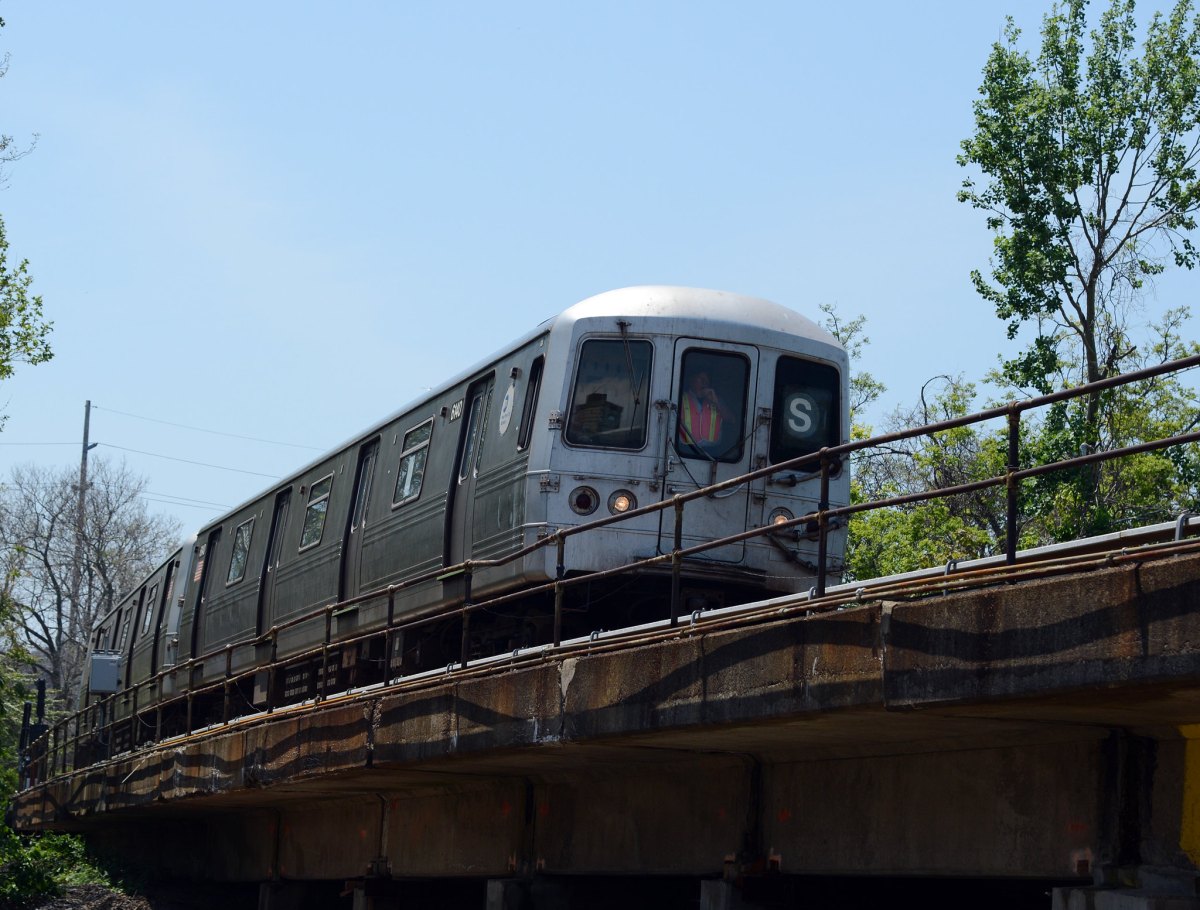Infra
A trains won’t run to Rockaways for 5 months in 2025 due to infrastructure work | amNewYork

A Broad Channel-bound shuttle train passes over Hammels Wye on the first day of restored service to Rockaway in 2013. The MTA now says it must replace the Hammels Wye viaduct to make the line resilient to future storms, necessitating a 17-week shutdown.
MTA New York City Transit / Marc A. Hermann
A trains will not run to the Rockaway Peninsula in Queens for five months next year, leaving New Yorkers with some of the city’s longest commutes with a bumpy start to 2025.
The MTA says that from Jan. 17 to May 19, 2025, A trains will not run from Howard Beach-JFK Airport to either Far Rockaway-Mott Avenue or Rockaway Park-Beach 116th Street in either direction.
For most of that time, Rockaway Park Shuttle trains that typically run to Broad Channel will instead run within the peninsula between Rockaway Park in the west and Far Rockaway in the east, just as it did during the aftermath of Superstorm Sandy in 2012, when the cross-bay A train crossing had been significantly damaged.
On the first weekend of the closure, Rockaway Park Shuttle trains won’t run at all. Free shuttle buses will run nonstop or make local stops from Howard Beach to Far Rockaway and from Rockaway Park to Broad Channel and Howard Beach.
For the remaining 16 weekends, the Q91 shuttle bus will run nonstop between Howard Beach and Far Rockaway, while Q109 shuttle bus will make local stops between Howard Beach and Beach 67th Street, stopping at Broad Channel and Beach 90th Street where transfers can be made to the shuttle train.

Alternate travel means include local, select, and express buses, the Long Island Rail Road, and the NYC Ferry.
The painful shutdown is being pursued so the MTA can update the Rockaway Line’s underlying infrastructure, which carries some 10,000 passengers daily. The Rockaway Line sustained severe damage from Superstorm Sandy in 2012, forcing its closure for seven months; work is intended to make it more resilient to future storms that will become more frequent and intense due to climate change.
The most critical component that requires fixing — the one necessitating the full closure — is the replacement of the structure and track on the Hammels Wye viaduct, which is where trains first enter the peninsula and continue either east to Far Rockaway or west to Rockaway Park. The MTA considers the Hammels Wye a “narrow chokepoint” that requires a full closure to get work done as quickly as possible and avoid closures at all during the busy summer beach season.
Meanwhile, work on the South Channel Bridge between Broad Channel and Rockaway— replacing the bridge’s mechanical and electrical systems that sometimes cause the drawbridge to get stuck and delay trains—will necessitate closing the passage to marine traffic for 10 weeks, coinciding with the train shutdown.
The MTA will be at a town hall meeting on Nov. 14, sponsored by local elected officials, at the YMCA on Rockaway Beach Boulevard in Arverne, where officials will discuss the impending outage. The MTA has also appointed a “czar” to oversee both the capital project and the alternate service provisions; Hugo Zamora will be at the helm, fresh off a stint doing the same work during the G train shutdown.
A train riders in Rockaway boast not only the longest average commutes of anyone across the five boroughs, they have some of the longest commutes of anyone in the country, State Comptroller Tom DiNapoli found in 2022. Part of that is due to the remote nature of the peninsula, which requires riders to travel through Brooklyn before getting to Manhattan, let alone the rest of their home borough.
But service on the A and shuttle train are also shaky on a good day. Advocates and local pols have long called for train service to be reactivated along the disused Rockaway Beach Branch of the LIRR, replaced with M train service all the way to Rockaway. Still, Mayor Eric Adams and the feds have largely rebuffed this, putting capital dollars into turning the right-of-way into a High Line-esque linear park.








